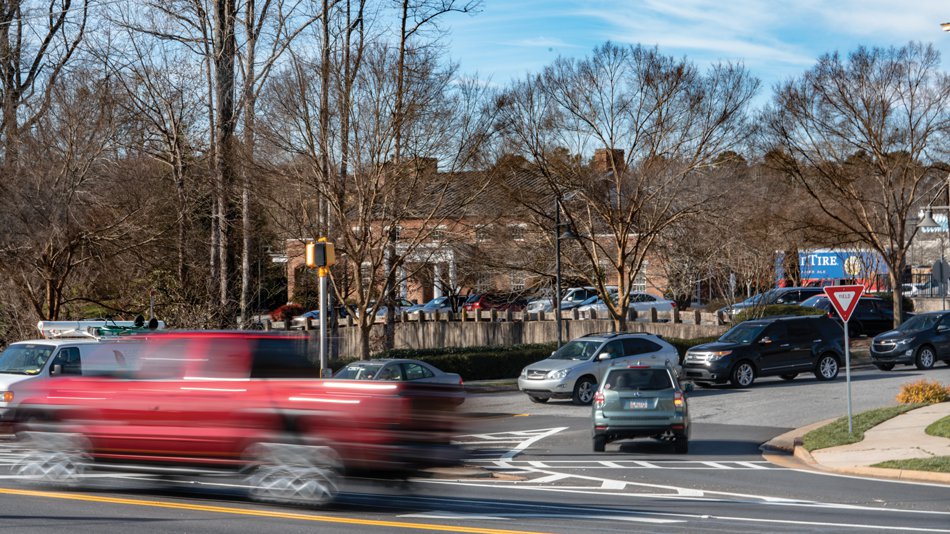UPDATE: In a recent email to Forsyth County News, Forsyth County Engineering Director John Cunard clarified that concrete islands are required by GDOT and Forsyth County to have a yield sign at signalized intersection. Non-signalized intersections may have signs if there is also a striped island.
It seems a peculiarity in Forsyth County’s traffic rules could be changing.
Drivers have likely experienced an idiosyncrasy with certain yield signs in Forsyth County, namely those connected to intersections, which require drivers making a right turn to yield to those turning left.
While no formal action was taken, Forsyth County Commissioners discussed the county’s standard for placing yield signs and the issues that have been caused for some drivers.
Chairwoman Laura Semanson said there was such a yield sign outside her neighborhood and said the signs cause “confusion, which leads to accidents.”
“Just using Windermere Parkway as a case history, as you start at Old Atlanta Road and get to Hwy. 20, the decision tree on who is yielding to who is so complex because they are not being evenly applied to the entire range of the road,” Semanson said. “All of us [commissioners], at some point, have raised teenage drivers in this county. It is incredibly difficult to have them understand in every other part of the [state] … It’s extremely dangerous, so we need to bring our roads in accordance with everywhere else.”


County manager Eric Johnson said he believes the unique sign placement was originally approved as a compromise for turns too far from a traffic signal and those using the signal.
“We have some that are so close to the intersection that I think people are debating whether you’re still going enough in the original direction that you can see the intersection and see the red light or green light and see the oncoming car versus you are so clearly away that you need a yield sign to yield to whoever may be coming,” Johnson said. “We have some I think probably in-between where people can look at the same situation and judge the need or not need of yield signs differently.”
It appears not all of the community is against the yield signs at red lights, and District 4 Commissioner Cindy Jones Mills said a constituent had expressed frustration after yield signs were removed from Hammond’s Crossing and on Bannister Road.
“We took down the yield sign at Bannister Road and people have called me repeatedly saying, ‘Why is the yield sign gone at Bannister Road? Now we’re scared we’re going to get hit all the time when we turn there,’” Mills said. “The people that have lived here for a long time are used to the yield signs, they’re used to them being there.”
Semanson said there was a meeting last year involving county officials, officials with the Georgia Department of Transportation and District 25 state Rep. Todd Jones where the signs were heavily discussed.
She said following that meeting, a concrete island for the sign was added to the road, which was later removed. Semanson said she felt the sign should have been removed.
“Here’s the thing, you should never be yielding to someone turning left in front of you; you yield turning into traffic that exists,” Semanson said.
District 3 Commissioner Todd Levent also touched on issues for drivers coming the other way who are turning left onto the same road as those who are at the yield sign.
“How do you know they have a yield sign? You don’t get to see it, you see the back of something,” he said. “How do you know that they are going to yield to you?”
“You don’t,” Semanson responded.
Forsyth County Engineering Director John Cunard said the county has and would continue to focus on only having the signs in signalized intersections with concrete islands and removing the others.
Non-signalized intersections also can have signs if there is a striped island.
He recommended the public to contact the county about any signs without islands at signalized intersections.
“All the signalized intersections, they work correctly,” he said. “They either have a stop bar and no yield sign if the intersection controls it or there is at least a 75-square-foot concrete island. All of those have been corrected.
“But at the non-signalized intersections, they comply with our standards if they have an island and a yield sign. If we have any out there that don’t have an island, then we would recommend moving those.”


